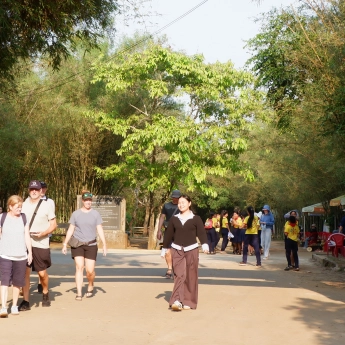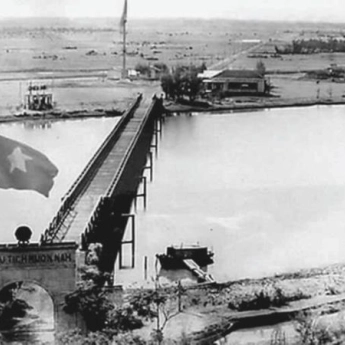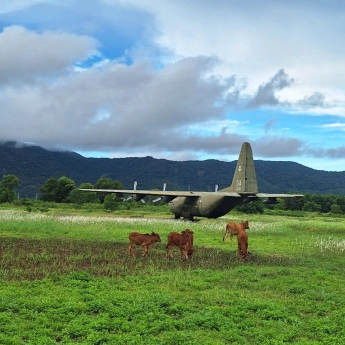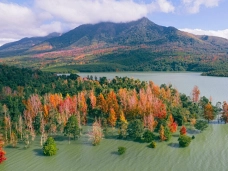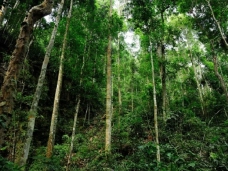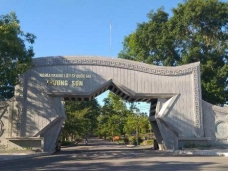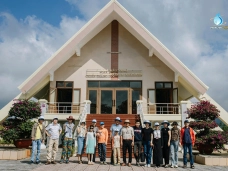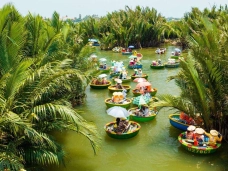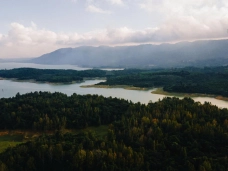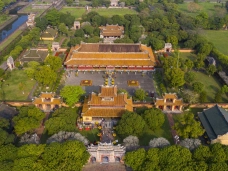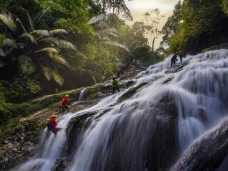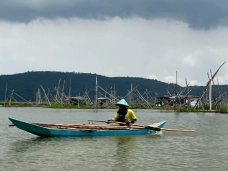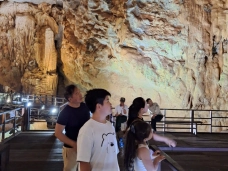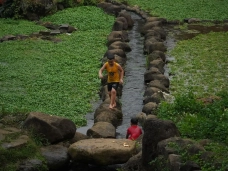DMZ – A Landscape Shaped by War and Memory
04-05-2025 16:13
Location
Highlight Image
Exploring the DMZ – Tracing the Memories of the Vietnam War
The Demilitarized Zone (DMZ) in Vietnam is one of the country’s most significant historical sites—a former boundary that divided North and South during the Vietnam War. As a heritage tourism specialist, I present this detailed article on the DMZ, covering its historical background, key battles in Quang Tri, notable attractions, and meaningful travel experiences.
1. DMZ: A Tumultuous Beginning
The DMZ was established on July 21, 1954, following the Geneva Accords [1], which ended the First Indochina War. It served as a temporary boundary dividing Vietnam into North (Democratic Republic of Vietnam, Hanoi) and South (State of Vietnam, later Republic of Vietnam, Saigon). Spanning 76.1 km from the Laos border to the East Sea and extending 5 km on each side of the Ben Hai River, the zone was intended to prevent military presence from both sides [2].
Although created as a buffer for peace, the DMZ quickly became one of the most militarized zones in the world—described by Time magazine as “a bleeding wound.” It was supposed to be dissolved after national elections in 1956, but political tension and foreign intervention prolonged its existence throughout the Vietnam War [3].
2. Quang Tri – The Battlefield That Never Slept
Located within the DMZ, Quang Tri Province was one of the war’s fiercest battlegrounds. Notable engagements include:
Battle of Quang Tri (1968): Part of the Tet Offensive, North Vietnamese forces targeted the provincial capital in an attempt to destabilize the South Vietnamese government. The battle lasted less than 24 hours and was extremely intense before ARVN and U.S. forces regained control.
First Battle of Quang Tri (1972): As part of the Hanoi Spring Offensive, the People’s Army of Vietnam (PAVN) crossed the DMZ and captured Quang Tri on May 2, 1972. With the 304th, 308th, and 324B divisions, they overwhelmed the newly formed ARVN forces and gained control of Quang Tri Province and parts of Thua Thien [5].
Second Battle of Quang Tri (1972): ARVN, led by Lieutenant General Ngo Quang Truong, launched a counteroffensive to retake the city. The battle lasted from June 28 to September 16, 1972, making it the longest of the war. Supported by U.S. airpower, ARVN recaptured the city but suffered heavy losses—977 soldiers killed and thousands wounded [6][7]. PAVN casualties were estimated at over 4,000 [8]. This battle is considered a costly victory for the South [9].
3. Must-Visit Historical Sites in the DMZ
The DMZ is home to numerous important historical landmarks that draw history and culture enthusiasts:
-
Vinh Moc Tunnels: A three-level tunnel complex where entire communities lived underground to avoid bombings. Seventeen children were born here during the war. Today, the site includes a small museum with an entrance fee of about 40,000 VND [10][11].
-
Hien Luong Bridge: Spanning the Ben Hai River, it marked the border from 1954 to 1972. The bridge is painted in two colors (red for the North, blue for the South), symbolizing division [12].
-
Truong Son National Cemetery: The largest war cemetery in Vietnam, resting place of over 10,000 North Vietnamese soldiers [13].
-
Camp Carroll: Once the largest artillery base of the U.S. Marine Corps, equipped with 24 cannons. It was captured by North Vietnamese forces during the 1972 Spring Offensive [14].
-
The Rockpile: A former U.S. Marine observation post, now inaccessible but visible from the highway [15].
-
Dakrong Bridge: The starting point of National Highway 15, a branch of the Ho Chi Minh Trail [14].
-
Khe Sanh Combat Base: Site of the infamous 1968 siege, now featuring remnants such as the red-dirt airstrip and war relics [15].
These locations not only preserve history but also honor the resilience of the Vietnamese people.
4. Historical Journey
Location and Access:
The DMZ lies in Quang Tri Province, near Dong Ha town, about 60 km from Dong Hoi, 100 km north of Hue, and 150 km from Da Nang.
Tour Options:
-
From Dong Hoi: Full-day tours (6:00 AM–6:00–7:00 PM), priced around USD 10–15. These can be crowded, especially at Vinh Moc Tunnels.
-
From Dong Ha: Includes stops such as Vinh Moc Tunnels, Dakrong Bridge, The Rockpile, and Khe Sanh. Some tours may omit Camp Carroll or Con Thien [11], priced around USD 15–17.
-
From Hue: Similar to Dong Hoi tours, lasting all day and priced USD 10–15. Vinh Moc Tunnels are often the busiest [17].
-
Private Car: More expensive but flexible—ideal in the rainy season or for hard-to-reach spots.
-
Motorbike: Suitable for adventurous travelers, but tiring due to long distances (up to 300 km round trip). Staying overnight in Dong Ha is recommended [11].
Special Tours:
Explore Cồn Cỏ, Vinh Moc, Hien Luong Bridge, and Cua Tung on a 2-day-1-night tour [HERE], or enjoy a 3-day-2-night journey that includes Rú Lịnh [HERE]. For Khe Sanh, check out the 2-day-1-night Pickup Tour [HERE], or the 3-day-2-night version [HERE].
Travel Tips:
-
Weather: Rainy season runs from September to December. Bring a raincoat or use a private vehicle [11].
-
Time: A full itinerary takes a full day, so plan accordingly [16].
-
Clothing: Wear comfortable clothes and walking shoes, especially for tunnel visits [11].
-
Respect: The DMZ holds spiritual and historical significance. Show respect, particularly at sites like Truong Son Cemetery [13].
Conclusion
The DMZ is not only a historic region but also a place to understand the Vietnam War’s depth, national division, and the people’s resilience. With landmarks like Vinh Moc Tunnels, Hien Luong Bridge, and Khe Sanh Base, and easy access from Dong Ha or Hue, the DMZ is a must-visit for history lovers and those seeking to explore a painful yet heroic chapter of Vietnam’s past. Plan your meaningful journey today.
Phong Nha Viet
References
[1] Vietnamese Demilitarized Zone - Wikipedia. https://en.wikipedia.org/wiki/Vietnamese_Demilitarized_Zone
[2] 1954 Geneva Conference - Wikipedia. https://en.wikipedia.org/wiki/1954_Geneva_Conference
[3] Geneva Accords | History of Indochina & Impact on Vietnam War | Britannica. https://www.britannica.com/event/Geneva-Accords
[4] Battle of Quang Tri (1968) - Wikipedia. https:// https://en.wikipedia.org/wiki/Battle_of_Quang_Tri_%281968%29
[5] First Battle of Quảng Trị - Wikipedia. https://en.wikipedia.org/wiki/First_Battle_of_Qu%E1%BA%A3ng_Tr%E1%BB%8B
[6] Second Battle of Quảng Trị - Wikipedia. https://en.wikipedia.org/wiki/Second_Battle_of_Qu%E1%BA%A3ng_Tr%E1%BB%8B
[7] South Vietnamese forces retake Quang Tri City | HISTORY. https://www.history.com/this-day-in-history/september-15/south-vietnamese-forces-retake-quang-tri-city
[8] How South Vietnam Won the Vietnam War's Longest Battle - HistoryNet. https://www.historynet.com/vietnams-longest-battle/
[9] Quangtri in Ruins After Battles - The New York Times. https://www.nytimes.com/1972/10/08/archives/quangtri-in-ruins-after-battles-quangtri-city-after-battles-is.html
[10] DMZ (Vietnam) – Travel guide at Wikivoyage. https://en.wikivoyage.org/wiki/DMZ_%28Vietnam%29
[11] Vịnh Mốc tunnels - Wikipedia. https://en.wikipedia.org/wiki/V%E1%BB%8Bnh_M%E1%BB%91c_tunnels
[12] Hiền Lương Bridge - Wikipedia. https://en.wikipedia.org/wiki/Hi%E1%BB%81n_L%C6%B0%C6%A1ng_Bridge
[13] Trường Sơn Cemetery - Wikipedia. https://en.wikipedia.org/wiki/Tr%C6%B0%E1%BB%9Dng_S%C6%A1n_Cemetery
[14] Why Visit The Demilitarised Zone | Experience Travel. https://www.experiencetravelgroup.com/vietnam/info/dmz-demilitarised-zone
[15] Demilitarised Zone travel - Lonely Planet. https://www.lonelyplanet.com/destinations/vietnam/central-vietnam/demilitarised-zone-dmz
[16] Demilitarized Zone - TripAdvisor Reviews. https://www.tripadvisor.com/Attraction_Review-g2146376-d456193-Reviews-Demilitarized_Zone-Thua_Thien_Hue_Province.html
[17] Private DMZ tour Vietnam with Tam - VinaDMZ. https://vinadmz.com/
[18] Mr. Trung's DMZ Tour - TripAdvisor Reviews. https://www.tripadvisor.com/Attraction_Review-g293926-d2385443-Reviews-Mr_Trung_s_DMZ_Tour-Hue_Thua_Thien_Hue_Province.html



